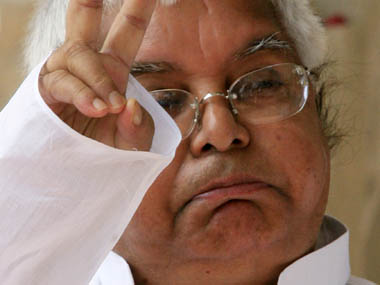Patna, Feb 28: Social and cultural activists from far and wide converged here on Thursday to lend their support to a massive rally that marked the conclusion of Kanhaiya Kumar's 'Jan Gan Man Yatra' across Bihar to galvanise public opinion against CAA-NPR-NRC.
Medha Patkar of the Narmada Bachao Andolan fame, Mahatma Gandhi's grandson Tushar Gandhi and former IAS officer Kannan Gopinathan, who gave up his career at a young age in protest against abrogation of Article 370, shared the stage with the former JNU students' leader.
Shabnam Hashmi -- founder of socio-cultural organisation ANHAD and sister of slain Marxist playwright and director Safdar Hashmi -- also joined them.
Congress MLA Shakil Ahmed Khan, a former president of JNU students' union himself who accompanied Kanhaiya during his tour that commenced at Champaran on January 30, Mahatma Gandhi's death anniversary, and leaders of state units of CPI and CPI(M) also addressed the rally held at Gandhi Maidan.
Kanhaiya began his speech with a one-minute silence held in the memory of those who lost their lives in Delhi violence.
Defending his frequent use of the term "azadi" (freedom) which supporters of the Sangh Parivar hold to be tantamount to supporting secession, Kanhaiya said, "We must talk about the virtues of azadi here since today happens to be the day when legendary revolutionary Chandrashekhar Azad had given up his life fighting the British."
Charging the ruling BJP with pitting Hindus against Muslims, he said, "Let us resolve to defeat their agenda by emulating the fabled friendship of Ram Prasad Bismil and Ashfaqullah Khan."
The young CPI leader, who made an unsuccessful debut from his native Begusarai Lok Sabha constituency last year, seemed unimpressed with the resolution passed by the Bihar Assembly earlier this week against NRC and inclusion of contentious clauses in NPR forms.
"Both the government and the opposition are busy congratulating themselves. I extend my congratulations as well. But to all those who are present here, I would say it is a half-victory. We must not allow our movement to fizzle out and draw inspiration from Gandhi's model of civil disobedience when the NPR exercise gets underway," he said.
"Villagers should ask their respective panchayat heads to ensure that no NPR official is allowed to come knocking in their areas of jurisdiction when NPR is scheduled to be undertaken in May," the CPI leader said.
"We have to brace for a long and tough fight. We are living under a regime which sends conscientious professionals like Dr Kafeel Ahmed behind the bars and declares anybody questioning its actions as an anti-national," said Kanhaiya, who has himself been slapped with a sedition case.
Earlier, in his address, Tushar Gandhi likened CAA, NPR and NRC to the "three bullets that killed the Mahatma" and asserted that these measures would "harm the poor, belonging to all religious communities and not just the Muslims".
"If the government does not care about the poor, we must tell those in power -- 'chale jaao' (go away) just as we had done to the British colonisers... it is going to be a long fight. Independence was achieved five years after the call for Quit India Movement," he said.
"We need to keep repeating the importance of non-violence over and over again while those with other value systems simply have to utter inciting statements," he said, in an oblique reference to the controversial poll campaign of Union minister and BJP leader Anurag Thakur during the recently-held Delhi Assembly elections, which the party lost.
Kannan Gopinathan said, "The claim that CAA is all about granting citizenship and not taking it away is bunkum. Any law which seeks to favour one section of the society on the basis of religion can be tweaked to harm another social segment... people say this government is Fascist. I am not sure of that but it is certainly stupid."
"This government brought in demonetisation and wrecked the economy but failed to achieve its promise of eradicating black money. It abrogated Article 370 and now it is clueless as to what to do with the situation in Kashmir," he said.
"Union minister Amit Shah had declared in Parliament that NRC will be implemented. Faced with public resistance, Prime Minister Narendra Modi had to say he does not know what NRC is. Keep up the stir for a little longer, he will start saying he does not know Amit Shah," said Kannan, evoking peals of laughter.
In the course of his speech, Kanhaiya also made the crowds sing after him the National Anthem but skipped a few words towards the end. Participants at the rally were viciously trolled on social media for the slip-up.
 Ranchi, Dec 16: RJD chief Lalu Prasad Yadav was today released from Birsa Munda Central Jail here, two-and-a-half months after he was convicted in a fodder scam case.
Ranchi, Dec 16: RJD chief Lalu Prasad Yadav was today released from Birsa Munda Central Jail here, two-and-a-half months after he was convicted in a fodder scam case.




Comments
Add new comment